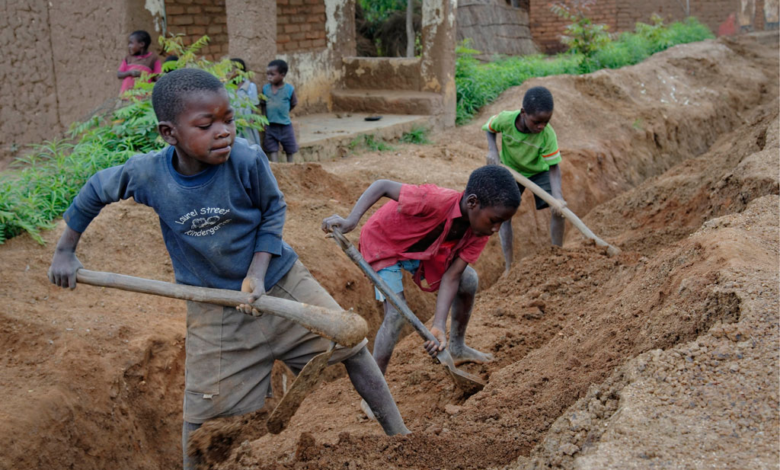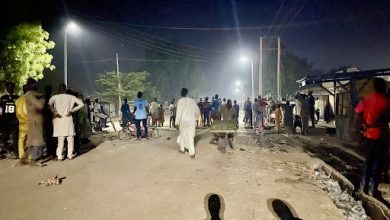UN Coalition Calls For Actions To Address Global Rise Of Child Labour
The number of children in child labour around the world rose to 160 million - the first increase recorded in 20 years. Today, an estimated 79 million children are engaged in hazardous work.

A coalition of UN human rights experts has called for measures to address and eliminate child labour. The experts made the call during the 5th Global Conference on the Elimination of Child Labour in South Africa.
They stressed the need for urgent action because the COVID-19 pandemic, armed conflicts, food insecurity, and humanitarian and climate change have threatened to alter years of progress against child labour.
“Tens of millions of children are engaged in hazardous work,” the UN human rights experts said.
In 2020, the International Labour Organisation (ILO) and the United Nations Children’s Fund (UNICEF) estimated that the number of children in child labour around the world rose to 160 million – the first increase recorded in 20 years.
Today, an estimated 79 million children are engaged in hazardous work. Seventy per cent of child labour is in the agriculture sector, with an estimated 108 million children working on farms and plantations around the world, which can cause short-term and chronic adverse health effects.
“To this day, children working in agriculture come in contact with banned and hazardous pesticides,” the report pointed out.
The report highlighted that child labour is more prevalent among girls and boys between the ages of 5 – 17, – 63 million girls and 97 million boys – were in child labour globally at the beginning of 2020.
Sub-Sahara Africa stands out as the region with the highest and most significant number of children in child labour. In 2019, the ILO estimated that there are approximately 72 million child labourers in Africa.
“The percentage of children in child labour remained unchanged over the four years while the absolute number of children in child labour increased by over 8 million,” ILO stated.
In Nigeria, uncertainty runs around the future of many children. Currently, the country has 15 million child labourers – the highest number in Western Africa.
Findings have linked child work in Nigeria to poverty, family dependency on children, adults taking advantage of their vulnerability, unavailability and lack of adequate educational system, and survival.
The National Bureau of Statistics (NBS) in 2017, under the Multiple Indicator Cluster Survey (MICS), revealed that about 43 per cent of Nigerian children aged between five and ten are working and about half of the working children are estimated to be engaged in child labour.
“Children in Nigeria engage in the worst forms of child labour, including work in quarry granite and gravel, commercial sexual exploitation, and armed conflict,” the report reads.
Yet today, UNICEF has said at least 10.5 million children are out of school in Nigeria, which is the highest rate in the world. Children in Northern Nigeria are more affected, mainly because of poverty, displacement, emergencies, and conflict.
Thousands of children are battling for survival in Northern Nigeria through begging, bearing the dual burden of school and work, and engaging in unlawful labour.
The various government have taken measures to combat child labour and all forms of modern slavery in Nigeria; progress has been slow and unequal nationwide.
HumAngle has reported hundreds of underage children are involved in child labour in different parts of Nigeria.
Call for action
The UN human rights experts welcomed the adoption of the Durban Call to Action on eliminating child labour on Friday, May 20, 2022.
The Durban Call to Action includes 49 immediate and effective measures governments should take to end child labour with an emphasis on agriculture.
The Call to Action also includes a commitment to reducing poverty and improving the labour conditions of all people working in rural communities, including peasants, fishers, forest dwellers, and pastoralists.
It also recommends ending their dependence on child labour and strengthening social protection in eliminating child labour by securing adequate incomes through cooperatives and representative organisations in line with relevant ILO instruments.
“We echo the call for urgent measures to address this tragedy.”
“We remain deeply concerned that more million children are going into work, which can seriously jeopardise their physical and mental health,” the experts said.
Support Our Journalism
There are millions of ordinary people affected by conflict in Africa whose stories are missing in the mainstream media. HumAngle is determined to tell those challenging and under-reported stories, hoping that the people impacted by these conflicts will find the safety and security they deserve.
To ensure that we continue to provide public service coverage, we have a small favour to ask you. We want you to be part of our journalistic endeavour by contributing a token to us.
Your donation will further promote a robust, free, and independent media.
Donate HereStay Closer To The Stories That Matter




